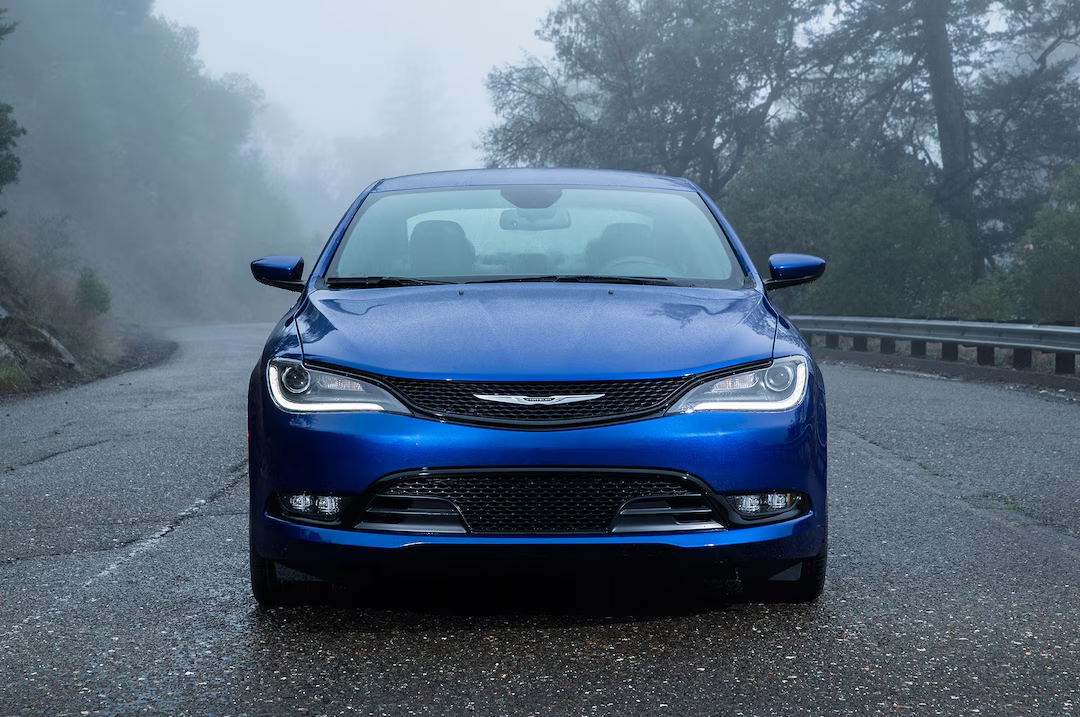Whether it is for a teen’s first car or a necessity because of a tight budget, at some point most car buyers find themselves strolling a used car dealer’s lot looking for a good deal. Here are cars you should buy used.
Heading to the dealership to purchase a new vehicle can quickly become overwhelming due to the sheer number of choices available.
One way to simplify your decision and get the most value for your money is by focusing on used cars.
However, before you dive into the market, it’s essential to be informed about which vehicles are smart to buy used and which ones are best avoided. These are the cars that tend to remain in their owners’ possession the longest.
Used Cars That Dealers Are Paying Top Dollar For
If you’re thinking about selling your car or just curious about the current market trends, it’s a great time to know which used cars are fetching top dollar at dealerships. With the ongoing demand for reliable pre-owned vehicles, some models are proving to be more valuable than others.
In this article, we’ll highlight the used cars that dealers are willing to pay a premium for, offering insight into which vehicles are in high demand and why. Whether you’re looking to sell or simply interested in what’s hot on the market, these top-dollar vehicles might just surprise you.
Toyota Camry
It’s no shock that this vehicle, known as one of the most dependable in the automotive world, continues to provide a stress-free, low-maintenance ride even for second or third owners.
While purchasing a used Toyota Camry may not be the cheapest option upfront due to its high demand and strong resale value, you’re unlikely to end up spending a lot on repairs over time.
As SUVs continue to dominate the automotive market, Toyota remains steadfast in its commitment to the sedans that have long defined its brand. The 2025 Toyota Camry marks the arrival of a next-generation model, embracing a fresh and stylish design language, much like the one introduced with the latest Prius.
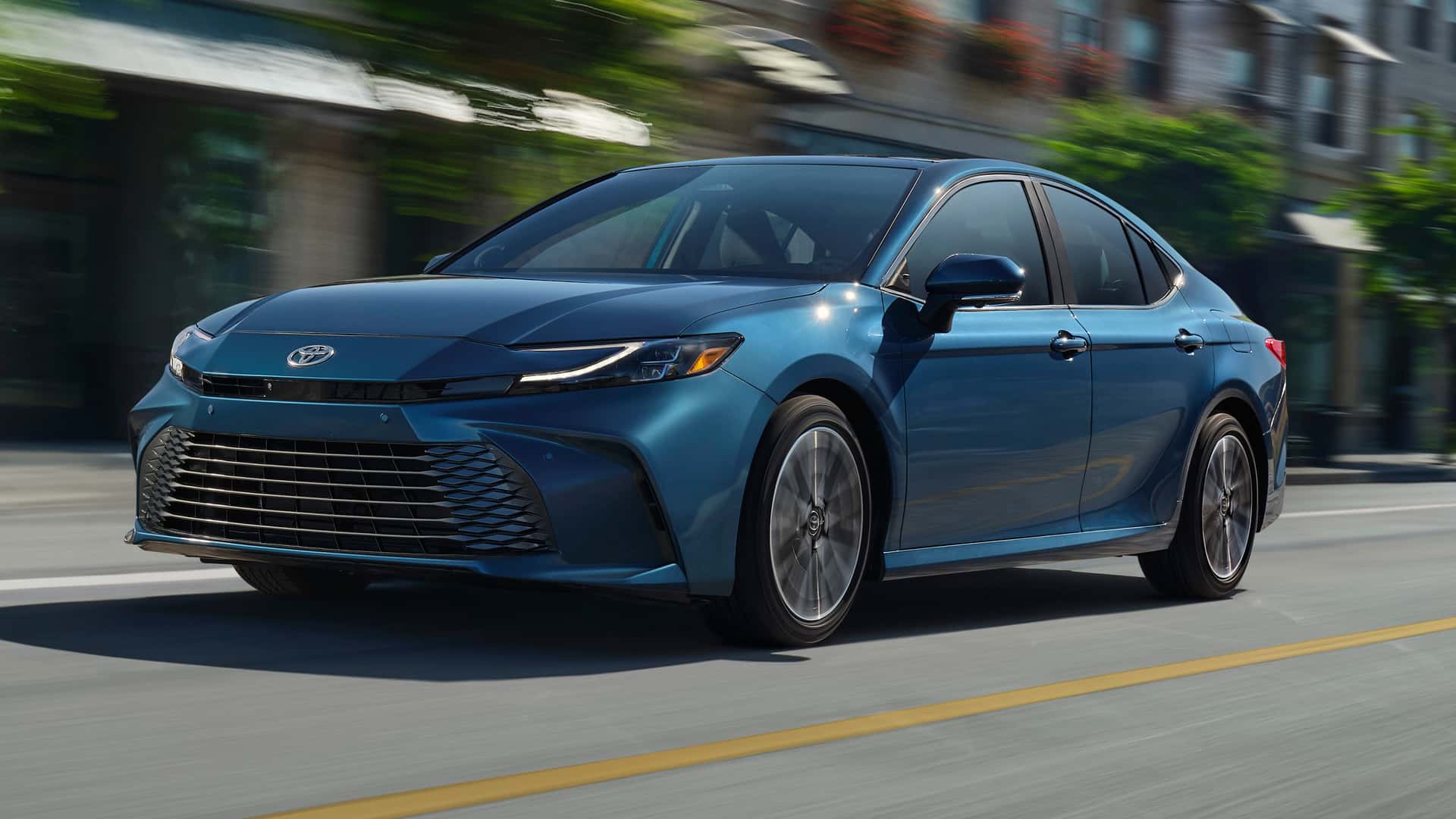
One significant change for the 2025 Camry is that it is now exclusively offered as a hybrid, signaling a shift in Toyota’s approach to this sedan. The timing for this redesigned Camry is perfect, as it arrives just as the eleventh-generation Honda Accord hits the market.
The redesign of the Camry brings several updates, including a revamped front fascia, a restyled interior, and a standard hybrid drivetrain. The Camry also offers an available e-AWD system, a re-engineered suspension, and a new braking system.
The digital instrumentation has been upgraded, with a standard 7.0-inch digital instrument cluster and an optional 12.3-inch display. A 10.0-inch head-up display is also available, alongside an 8.0-inch standard infotainment screen, with a 12.3-inch upgrade option.
Standard features now include wireless charging, Toyota Safety Sense 3.0, push-button start, dual-climate control with rear air vents, and blind-spot monitoring with rear cross-traffic alert. Additionally, there are new paint colors, including Ocean Gem and Heavy Metal, and the XSE trim offers available two-tone color schemes.
While the redesign of the 2025 Camry isn’t revolutionary, it does address several of the shortcomings of the previous model. The exterior now sports some expressive styling updates, but we feel that Toyota could have pushed the design further, especially considering the significant redesign of the Prius.
Inside, the improvements are more subtle but appreciated, contributing to a more refined cabin. The most notable improvements, however, are under the hood.
With its new hybrid powertrain, the 2025 Camry offers responsive acceleration, impressive fuel efficiency, and smooth braking. The steering is accurate, and the handling is responsive, making the Camry one of the more engaging midsize sedans to drive, with increased fun-to-drive appeal compared to past models.
Kia Rio
The perfect used car strikes a balance between affordability when new and proven long-term reliability, and the Kia Rio fits that description well.
As Business Insider notes, “hatchbacks are less expensive than compact SUVs to begin with, and as they are in less demand than crossover SUVs, they are a better deal for the buyer.”
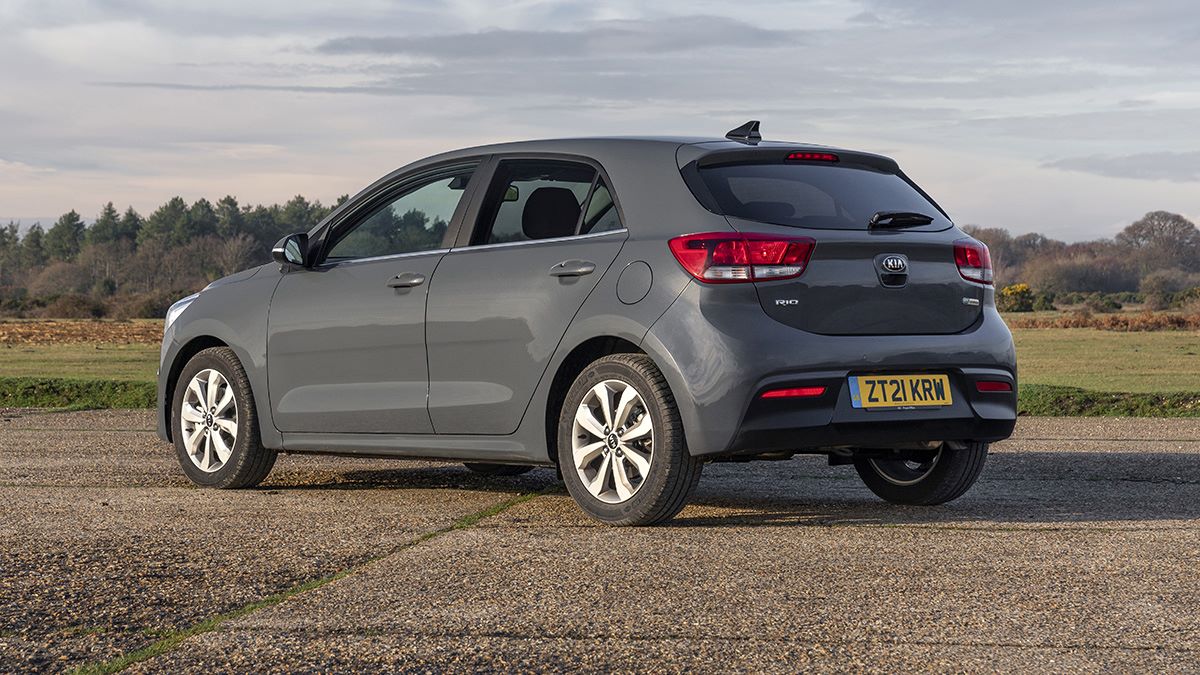
When considering a used Kia Rio, it’s wise to look at models that are about three years old. While “a brand new Kia Rio has a base price of just $15,390 making it one of the best new car deals under $18,000; 2016 models now cost about a third less than that.”
As subcompact sedans slowly fade from the American market, particularly in favor of SUVs and crossovers, it’s a shame that reliable, budget-friendly family cars in this body style, like the 2023 Kia Rio, aren’t getting the attention they deserve. The Rio offers an affordable price, an efficient powertrain, and available technology that makes it well-suited for transporting your most precious cargo.
Despite not always being recognized, the 2023 Kia Rio stands as an excellent choice for a starter car. It comes with a standard 1.6-liter inline-four engine producing 120 horsepower and 112 lb-ft of torque, achieving an impressive 36 mpg combined. While the driving experience isn’t thrilling, it’s far from dull.
The Rio competes with other affordable options like the Nissan Versa and the now-discontinued Hyundai Accent, making it a standout in a shrinking market. The best part is that you can easily drive off the lot with a fully-loaded version for just around $20k.
When it comes to price, the 2023 Kia Rio excels in affordability. The Rio isn’t trying to be anything it’s not—it’s a budget-friendly sedan aimed at offering value for money. With more Americans downsizing to more economical cars, the Rio is in an ideal position to meet those needs.
The base model starts at an impressively low MSRP of $16,750 for the LX trim. The higher-end S trim is priced at $17,390, and with options, the cost can reach just over $20,000. These prices don’t include the destination charge of $1,125 in the U.S.
As for handling and driving impressions, the 2023 Kia Rio offers a refreshing departure from the typical budget car, which often feels dull and uninspiring. While it may seem like most cars in this segment are just tools for getting from point A to point B, the Rio challenges that notion.
It provides a surprisingly responsive driving experience. The steering might feel a little disconnected, and the engine isn’t geared for performance enthusiasts, but the Rio handles corners with more confidence than you might expect. The suspension is well-tuned, absorbing bumps and smoothing out rough patches of road for a comfortable ride.
Some might find the suspension slightly firmer than expected, but those who appreciate a more dynamic drive will value how it avoids feeling too soft or unsteady. The solid and predictable handling enhances the driving experience, giving drivers of all levels more confidence behind the wheel.
Subaru Outback
The all-wheel-drive Outback is a durable vehicle known for its ability to rack up high mileage while remaining dependable.
Even when purchasing a used model that’s more than a decade old, the Outback continues to offer a low-maintenance and low-cost ownership experience. Subarus, in general, are frequently regarded as excellent values whether buying used or new.
The 2025 Outback offers competent handling, though it isn’t particularly thrilling to drive. The steering is direct and well-balanced, but it lacks the kind of feedback that might make it more engaging. The Outback provides a smooth ride over most road surfaces and is capable of handling the occasional dirt or gravel road without trouble.

Most Outback models are equipped with a 2.5-liter flat four-cylinder engine, delivering 182 horsepower and 176 pound-feet of torque. For those seeking more power, a turbocharged 2.4-liter flat four-cylinder engine is available in higher trims and comes standard in the Wilderness model, producing 260 horsepower and 277 pound-feet of torque.
All Outback models feature all-wheel drive and a continuously variable automatic transmission (CVT). While the base engine can sometimes feel underpowered, it performs adequately for most everyday driving needs.
The turbocharged four-cylinder engine, on the other hand, provides a more energetic experience, though some turbo lag is noticeable. The CVT, while efficient, can feel a bit unrefined, especially during high-speed driving.
The 2025 Outback delivers above-average fuel efficiency for the wagon segment. Models with the base engine are rated by the EPA at 26 mpg in the city and 32 mpg on the highway.
Outbacks with the optional turbocharged four-cylinder engine achieve 22 mpg in the city and 29 mpg on the highway, while the Wilderness model has a rating of 21 mpg in the city and 26 mpg on the highway.
Nissan Altima
Topping survey as the number one used car under $15,000, a mid-decade Altima stands out for delivering strong value thanks to the way it “provides the ideal balance of affordability, functionality, and style.”
While its pricing and overall performance may be enough to close the deal, the real satisfaction comes from what lies beneath the hood of the Nissan Altima, as “the base engine packs a surprising punch with its 2.5 liter, 182 horsepower engine.”
The 2025 Altima family sedan is a well-rounded vehicle that offers solid performance without any major standout features. It’s affordable, efficient, and comfortable, with an attractive design.

The standard four-cylinder engine provides a respectable 39 mpg on the highway, and the continuously variable automatic transmission (CVT) operates smoothly, avoiding excessive droning. All-wheel drive is available, and the five-passenger cabin offers ample space, comfortable seating, and a competitive infotainment system.
Additionally, the Altima features decent trunk space and a solid list of standard safety features. For 2025, the Special Edition package adds a sportier touch to the Altima, though even the base non-hybrid Honda Accord models feel more dynamic in comparison.
In short, the Altima is a dependable option in the mid-size family sedan segment, though it doesn’t quite deliver the thrilling experience offered by sports sedans like the Honda Accord. However, for many buyers, the Altima’s practicality and features will more than suffice.
For 2025, the biggest change is the discontinuation of the 248-hp SR VC-Turbo-powered model, leaving only the 188-hp 2.5-liter four-cylinder (182 hp in AWD models) as the engine option. This engine carries over from the previous year.
The loss of the VC-Turbo is offset by the introduction of the new Special Edition package, which adds several styling and tech upgrades to the SV trim. Nissan has also introduced a Maintenance Care package, which covers up to three scheduled oil changes for two years or 24,000 miles.
Pricing for the 2025 Nissan Altima starts at $28,140 and can go up to $34,470, depending on the trim and options. The price spread across the first three trims is relatively narrow, with the SR VC-Turbo no longer available for 2025, making the SL trim the most expensive option.
However, for buyers looking for a sporty look and a decent level of equipment, the SV trim with the new Special Edition package offers a great balance.
This package includes a 12.3-inch infotainment system, wireless charging, dual-zone climate controls, a sunroof, and exterior upgrades like a rear spoiler, glossy black 17-inch wheels, illuminated kickplates, and a center console with faux carbon fiber. Despite these additions, the total price still comes in slightly lower than the SR’s base price. All-wheel drive is available for an additional $1,500 on the SV, SR, and SL trims.
Toyota Sienna
Buying a used minivan can be unpredictable, as it’s likely the interior has seen its fair share of kid-related spills and messes.
However, a pre-owned Sienna even if it still holds a few crumbs and crayon pieces can offer many more years of dependable performance for a new family.
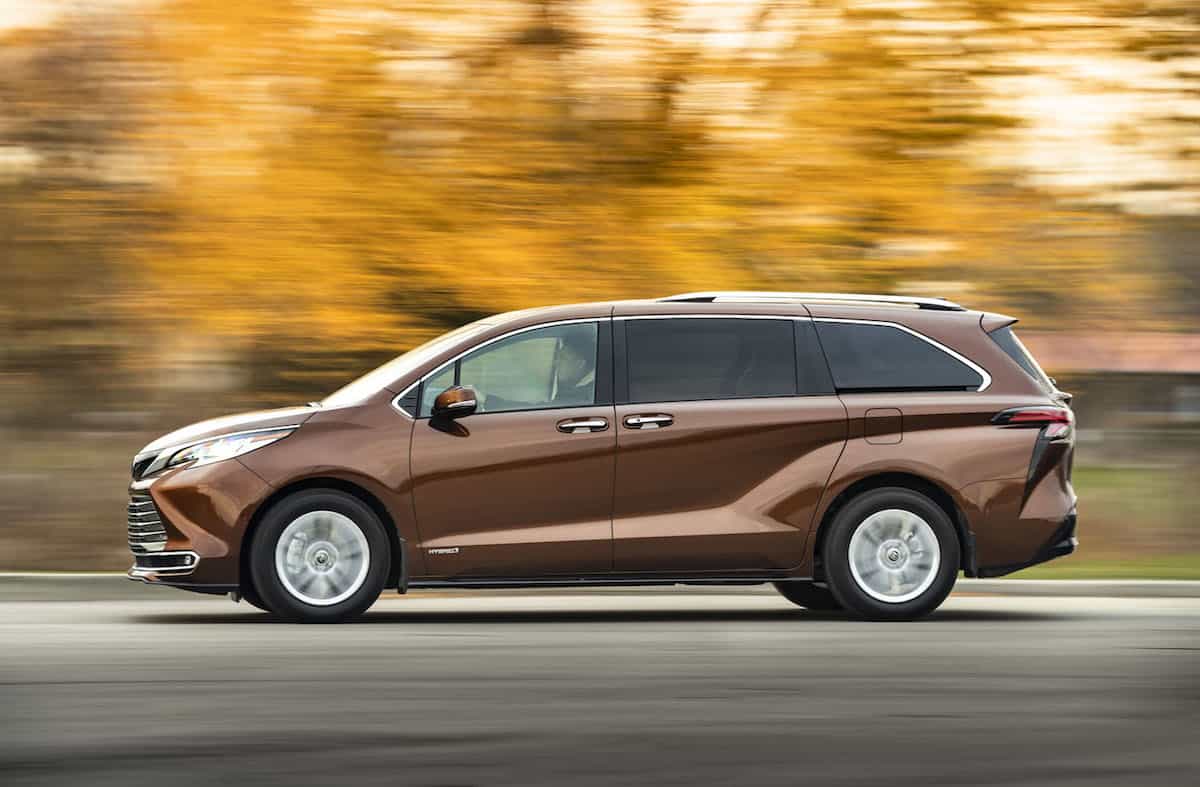
Thanks to Toyota’s reputation for reliability, it stands out as a smart option in the used minivan market.
For those open to looking at models from ten years ago, Autotrader.com suggests you might be able to pick up a Sienna for less than $5,000!
The 2025 Toyota Sienna brings several upgrades to a minivan that debuted in 2021, continuing to focus on space, practicality, and technology. It offers generous room for passengers and cargo, making it a great option for families and anyone in need of a versatile vehicle.
The 2025 model adds new features designed to enhance both safety and convenience. Notably, it now includes a standard rear-seat occupant detection system, which can alert the driver if a passenger remains in the second or third-row seats after the car is turned off and the driver exits.
Additionally, the Sienna’s touchscreen has been upgraded to a larger size, with support for wireless Apple CarPlay and Android Auto, ensuring seamless smartphone integration.
For added convenience, Toyota now offers an onboard vacuum and refrigerator as available options. These improvements make the 2025 Sienna an even more appealing choice for those seeking a family-friendly, feature-packed minivan.
In terms of performance, the 2025 Sienna continues with a standard hybrid powertrain, which delivers excellent fuel economy, further enhancing its appeal for cost-conscious drivers.
The interior is spacious and easy to navigate, with big windows providing unobstructed views and an available surround-view camera system for added peace of mind. All-wheel drive is available as well, making the Sienna suitable for a variety of driving conditions. However, there are some drawbacks.
The acceleration can feel sluggish, especially when the minivan is fully loaded with passengers and cargo. The brakes also feel uneven, which can make it difficult to come to a smooth stop. Additionally, the second-row seats are fixed and cannot be removed, limiting the vehicle’s flexibility in terms of cargo space.
This year’s model also sees the addition of some new tech features, including the advanced rear-seat occupant detection system, as well as the expansion of touchscreens across most models. The Sienna continues to be a practical, family-friendly minivan, with the 2025 updates ensuring it remains a strong contender in its class.
Used Cars That Dealers Won’t Touch
When shopping for a used car, most buyers focus on finding the best deals, but there are certain vehicles that dealers shy away from. Whether it’s due to reliability issues, excessive mileage, or outdated features, some used cars just don’t make the cut for resale.
In this article, we’ll explore the used cars that dealers won’t touch, highlighting the models that can cause headaches for sellers and buyers alike. By understanding which cars are less desirable in the market, you can make more informed decisions and avoid potential pitfalls when buying used.
Mini Cooper
Mini vehicles may be undeniably charming and packed with European flair, but their overall reliability from the Roadster to the Clubman, and including the iconic Mini Cooper tends to hurt their value in the used car market.
Despite their appealing design, you’re likely to spend more than you’d like at the repair shop with this one.
Mini’s iconic Cooper hatchback and convertible receive a stylish update for the 2025 model year, bringing a modernized look and new features while maintaining the car’s unmistakable identity.
The Cooper Electric debuted first, showing off the brand’s forward-thinking direction, and now the gasoline-powered versions, including the sportier Cooper S trim, follow suit.
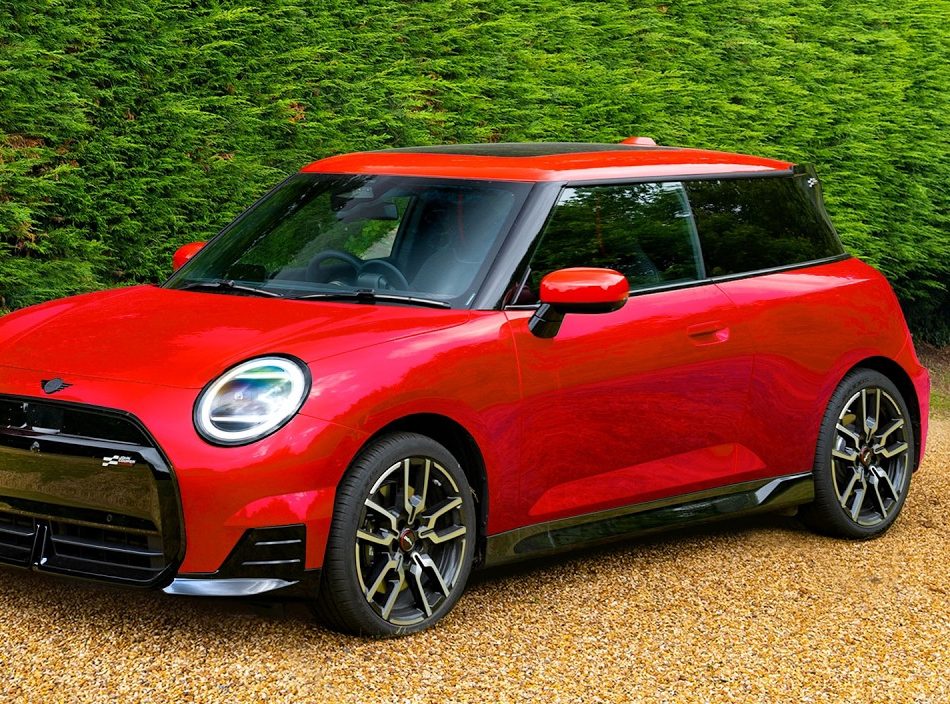
All models come with a turbocharged four-cylinder engine paired with a seven-speed dual-clutch automatic transmission. The base Cooper generates 161 horsepower, while the Cooper S increases output to 201 horsepower.
While the Cooper retains its compact size, the redesigned cabin provides a more open and airy feel, with higher-quality materials enhancing the overall premium atmosphere. The 2025 Cooper lineup starts with the two-door Cooper S, followed by the base Cooper, and then includes the five-door and convertible variants.
For the 2025 model year, the Mini Cooper is ranked #6 in Best Subcompact Luxury Cars, with competitors including the Audi A3, starting at $39,495; the Acura Integra, starting at $34,195; the Mercedes-Benz CLA-Class, starting at $45,550; the Cadillac CT4, starting at $36,490; and the BMW 2-Series Gran Coupe, starting at $42,775. The Cooper, priced starting at $30,125, offers a solid entry in this category, blending performance with style.
The 2025 Mini Cooper has undergone a redesign that blends the brand’s past with its future. Key updates include a new circular infotainment display and more premium interior materials, which give the cabin a slightly more spacious feel.
Mini offers the 2025 Cooper in two models—the base Cooper and the sportier Cooper S—with three trim levels available: Signature, Signature Plus, and Iconic. Prices for the Cooper start at $30,125, and depending on the trim and options, they can go up to $42,475.
If you’re looking for a more powerful and well-equipped version, we recommend the Cooper S with the Signature Plus trim, which adds desirable features and provides more customization options. Additionally, the four-door body style is available for an extra $1,000.
Chevrolet Spark
It offers a cautionary note for those in the market for an inexpensive compact used car.
Although the Chevrolet Spark is enjoyable to drive and presents good value when purchased new, “used [mid-decade] Chevy Sparks have poor reliability ratings, which means that maintenance and upkeep may erode any potential savings.”
While the subcompact hatchback does have its downsides, including a cramped back seat and a somewhat cumbersome process for folding the rear seats, these are common traits in this class. Cars like the Hyundai Accent and Kia Rio offer a bit more rear-seat room than the Spark.
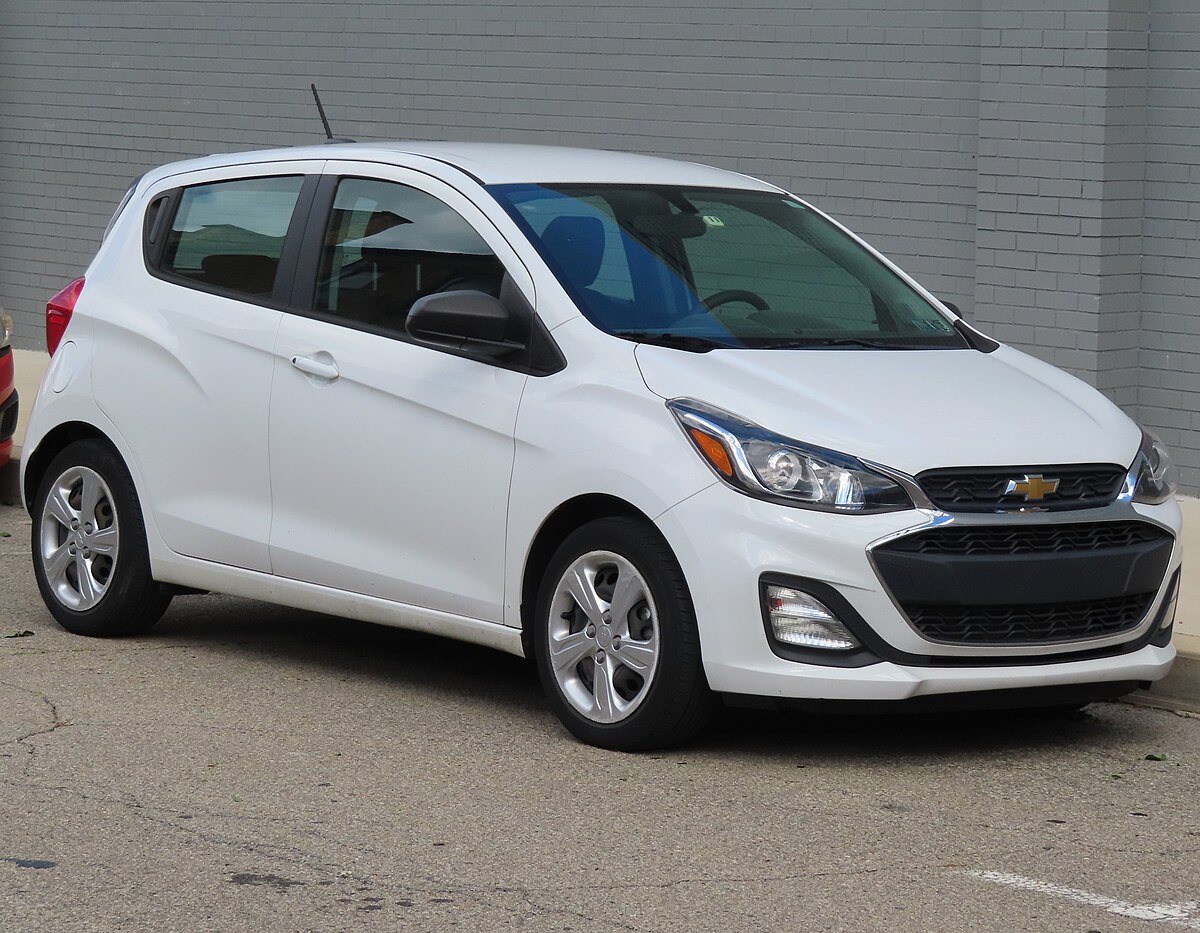
The interior is not luxurious, but it avoids the cheap materials found in some alternatives like the Mitsubishi Mirage. Additionally, Chevy’s infotainment system stands out as user-friendly and intuitive, making it a highlight of the car.
While the engine may feel underwhelming on the highway, it’s more than sufficient for city driving, where the car’s nimble nature is most evident. For those who prefer a more engaging driving experience, the manual transmission available across all trims is a welcome option, which is becoming increasingly rare.
The 2022 Spark enters the market with few changes, maintaining its reputation as one of the most affordable new cars available, costing around $1500 less than the similarly priced Mitsubishi Mirage. Unfortunately, Chevy has announced that the Spark will be discontinued after the 2022 model year, with production ending in August.
However, the $1100 continuously variable automatic transmission (CVT) option is not recommended; the manual transmission is far more enjoyable to drive. The faux-off-road ACTIV trim doesn’t justify the added cost, so it’s best to stick with the more straightforward configurations that Chevy offers.
Every Spark comes equipped with a modest four-cylinder engine that powers the front wheels via either a five-speed manual transmission or a continuously variable automatic transmission (CVT). The CVT performs well without creating excessive engine noise, and although the Spark feels responsive at lower speeds, it struggles to gain speed on the highway.
While the Spark isn’t ideal for long road trips, it excels in urban environments, navigating traffic with ease. Its short wheelbase makes it agile in tight spaces, but it doesn’t sacrifice ride quality for maneuverability. Although the ride can be bouncy over uneven surfaces, the Spark does a good job of dampening harsh bumps.
Compared to other economy cars, rattles and road noise are less noticeable. The steering feels direct and provides good feedback about the road surface, while at highway speeds, the car remains stable and easy to handle. The firm brake pedal provides quick and consistent responses, allowing the car to slow down efficiently.
Dodge Grand Caravan
The Grand Caravan [from 2013 to 2016] has a low-reliability score, falling far short of class leaders,” and the criticism doesn’t stop there.
The publication also points out that, “parents should also be concerned about the Grand Caravan’s low safety scores, and while its low-rent cabin materials aren’t a deal-breaker on their own, cheap upholstery and plastics mean that your new acquisition will probably already be showing its age.”
Overall, this is a minivan best avoided on used car lots.
The “grand” in the Dodge Grand Caravan’s nameplate no longer reflects its value or stature, but rather its age. The fifth-generation minivan has been in production for over a decade, and its age is evident in more than just its appearance.
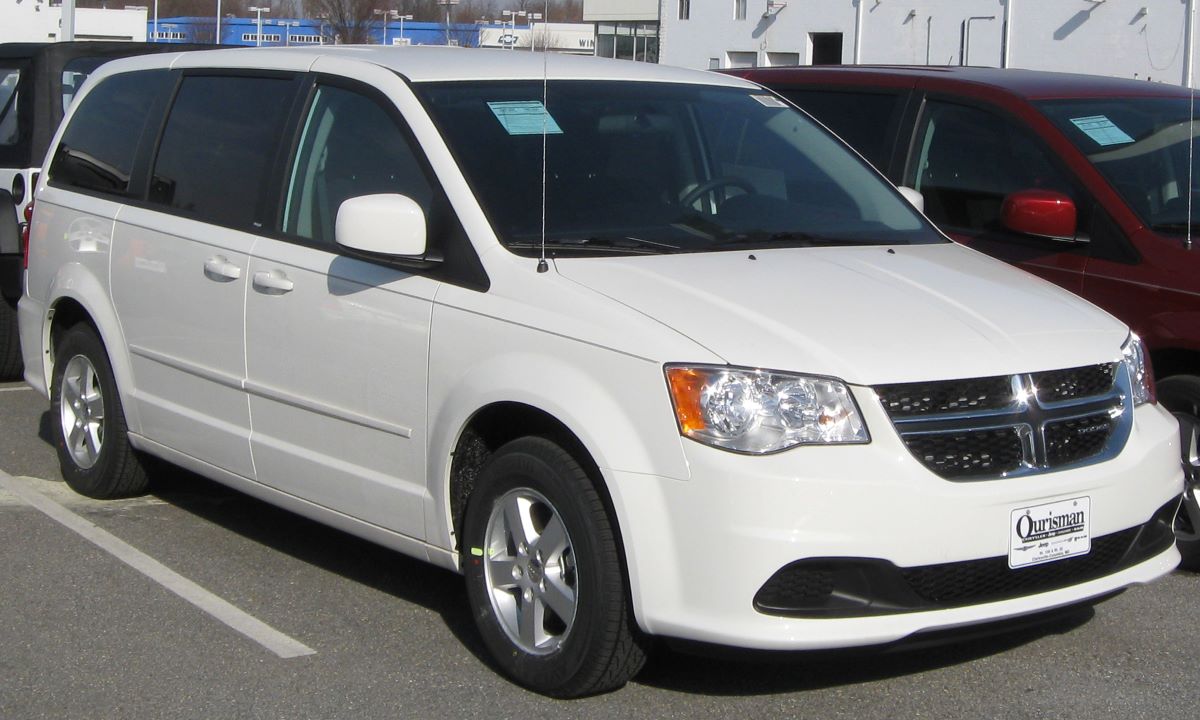
Once a top contender in the family-hauling market, the Grand Caravan now finds itself overshadowed by more modern competitors, with improvements in aesthetics, comfort, convenience, technology, and safety standards.
Despite its outdated features, the Grand Caravan still has a strong performance core, powered by a 3.6-liter V6 engine that generates 283 horsepower and 260 lb-ft of torque, mated to a six-speed automatic transmission.
The Grand Caravan is expected to be discontinued soon, with sales already halted in 12 American states, signaling its inevitable end. This development has led to increased interest in newer, more refined minivans like the Chrysler Pacifica, Honda Odyssey, and Toyota Sienna, which offer superior overall value and performance.
Despite its shortcomings, the Dodge Grand Caravan still offers solid value, especially in terms of affordability. With a starting MSRP of $27,290 for the base SE model, it remains one of the most budget-friendly minivans available, with only the Chrysler Voyager priced slightly lower.
The SE Plus trim, which adds more features, is priced at $30,090. The top-tier SXT model, which includes additional amenities and conveniences, carries an MSRP of $32,790. All prices are exclusive of tax, registration, licensing fees, and Dodge’s destination charge of $1,495.
Designed primarily for passenger and cargo transport, the Grand Caravan prioritizes comfort in its ride quality. The minivan’s suspension is well-tuned to absorb typical road imperfections and undulations, providing a smooth and stable ride under most conditions.
While more substantial bumps may send a noticeable jolt through the cabin, the Grand Caravan’s performance in this regard is on par with other vehicles in its class. Noise from the engine and the outside environment is adequately isolated, maintaining a quiet and pleasant driving experience.
The Grand Caravan’s suspension is balanced, delivering a comfortable ride while ensuring the vehicle remains composed and stable through curves. Despite its boxy shape and hefty weight, the Grand Caravan doesn’t feel top-heavy, and body roll is minimal during turns.
The vehicle provides sufficient feedback to the driver through the steering wheel, accelerator, and brake pedals, creating a smooth and relaxed driving experience. However, its larger size can make maneuvering in tight spaces more challenging, though it still performs adequately for regular driving and city navigation.
Chrysler 200
The Chrysler 200 was a mid-size sedan that initially aimed to compete with vehicles like the Toyota Camry and Honda Accord. However, the 200 faced several issues that made it less attractive to dealers. These included poor resale value, questionable reliability, and engine problems, particularly with the 3.6L V6.
Despite an initial redesign in 2015, the vehicle never gained strong sales traction and was discontinued in 2017. Parts availability can be tricky, and many of these cars are now seen as budget vehicles, which leads dealers to avoid them in favor of more reliable, popular models.
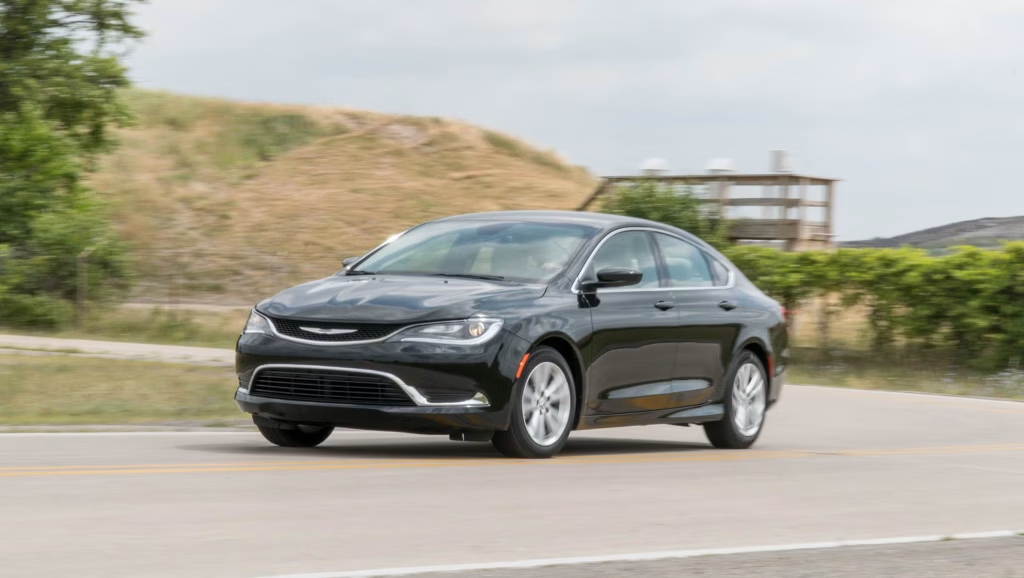
The 2017 Chrysler 200 is offered in five trim levels: LX, Touring, Limited Platinum, 200S, and 200C Platinum. As you move up from the base LX to the 200C Platinum, there’s a noticeable increase in features, luxury, and, for the 200S, a focus on sporty handling.
For engines, the 2017 Chrysler 200 offers two options: a 2.4-liter Tigershark four-cylinder engine producing 184 horsepower and 173 lb-ft of torque, or a 3.6-liter Pentastar V-6 engine that generates 295 horsepower and 262 lb-ft of torque.
Both engines are paired with a nine-speed automatic transmission. Front-wheel drive and all-wheel drive configurations are available, though all-wheel drive is exclusively offered with the V-6 engine.
When equipped with front-wheel drive, the four-cylinder models achieve EPA ratings of 23 mpg city, 36 mpg highway, and 27 mpg combined. The V-6 models have an EPA rating of 19 mpg city, 31 mpg highway, and 23 mpg combined. With all-wheel drive, the V-6 models’ fuel efficiency drops to 18 mpg city, 28 mpg highway, and 22 mpg combined.
Chevrolet Sonic
The Chevrolet Sonic was a subcompact car that performed decently in terms of fuel efficiency and handling but never gained a large following. It also faced competition from other subcompact cars that offered better features and a more modern driving experience.
Dealers may avoid the Sonic due to its small size, lack of features, and marginal resale value. Additionally, the limited demand and the fact that production was discontinued in 2020 means that dealers may not want to deal with the hassle of sourcing parts and handling a car with such limited appeal.
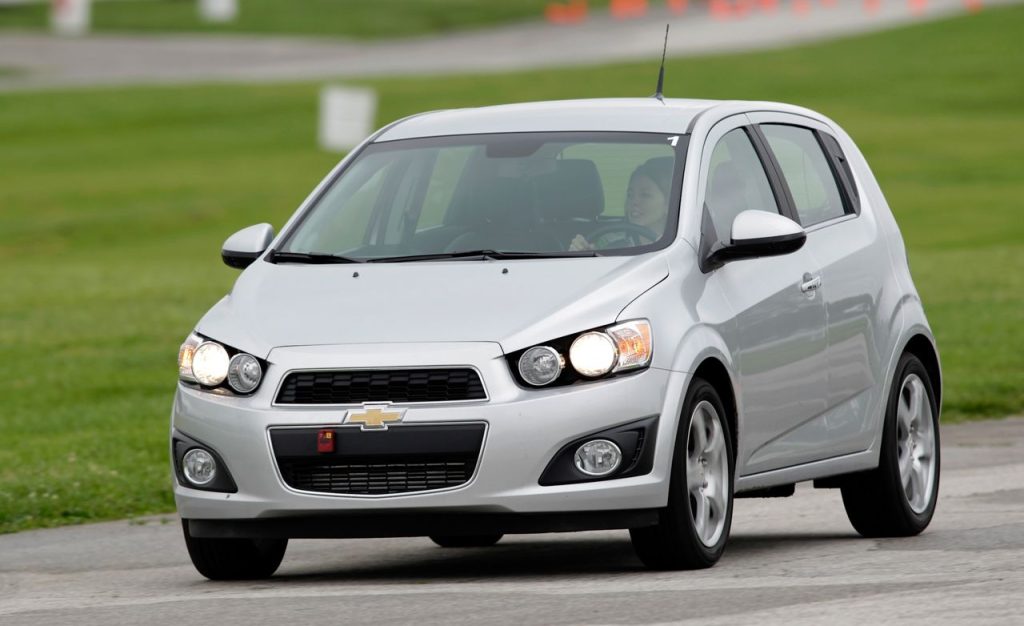
The days of compact cars lacking modern technology and high-end features are long gone. While the 2020 Chevrolet Sonic is far from being on the same level as a Rolls-Royce or even a Mercedes-Benz, it offers buyers a small, fuel-efficient car equipped with nearly the same amount of technology as much more expensive vehicles. But are these features really that significant?
For example, the 2020 Sonic comes with a built-in 4G LTE hotspot, which provides a stronger signal and better connectivity, even in areas where smartphone reception is poor. In addition, standard Android Auto and Apple CarPlay allow seamless integration of your smartphone experience with the car’s larger center-mounted touchscreen.
In terms of its basic performance, the Sonic holds up well with a spacious cabin and ample cargo space. It also offers a turbocharged engine that produces 138 horsepower and 148 lb-ft of torque, making it nimble in city traffic and capable of quickly merging onto highways.

